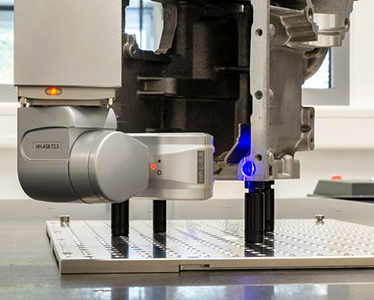The Process of Forging the Forged Ring
2023-09-22
The forging process of a forged ring at Maple machinery involves several essential steps to shape the metal into the desired ring form. Here's a description of the forging process:
Maple's Material Selection: The first step is to select a suitable metal or alloy for forging the ring. Commonly used materials include steel, stainless steel, aluminum, titanium, and others, depending on the specific application requirements.
Billet Heating: The selected metal billet is heated in a furnace to an optimal forging temperature. The temperature is carefully controlled to ensure the metal becomes malleable without reaching its melting point.
Billet Forming: Once the billet reaches the desired forging temperature, it is placed on a forging die. The forging process can be carried out using different methods, such as open die forging or closed die forging.
Forging: The billet is subjected to compressive forces through the use of a forging hammer or press. This force deforms the metal, shaping it into the general outline of a ring. The process may involve multiple forging blows or press cycles to achieve the desired shape and density.
Ring Rolling: If required, the partially forged ring may undergo further processing through ring rolling. In this step, the ring is rolled between two or more rotating dies to refine its shape, improve grain structure, and enhance mechanical properties.
Heat Treatment: After the forging and rolling stages, the ring is heat-treated to relieve internal stresses and optimize its mechanical properties, such as hardness, toughness, and strength.
Machining: Once the ring is adequately shaped and heat-treated, additional machining processes may be employed to achieve precise dimensions and smooth surfaces, if necessary.
Quality Inspection: Throughout the entire forging process, strict quality checks are performed to ensure the forged ring meets the required specifications and standards. Non-destructive testing techniques, such as ultrasonic or magnetic particle inspection, are often used to identify any defects or irregularities.
Final Finishing: The forged ring may undergo additional surface finishing processes, such as shot blasting or polishing, to improve its appearance and remove any surface imperfections.
Final Inspection and Packaging: The finished forged rings are subjected to a final inspection to guarantee compliance with all specified requirements. Once approved, the rings are appropriately packaged and prepared for shipment or further assembly.
In summary, the forging process for a forged ring involves heating the metal billet, shaping it through forging and possibly ring rolling, heat-treating it for improved properties, machining for precision, conducting quality inspections, and finally finishing and packaging the forged rings for their intended use.
Forged ring refers to a type of ring-shaped metal component that is produced through the process of forging. The forging technique involves shaping a heated metal billet using compressive forces to achieve the desired form.
Forged rings are commonly used in various industrial applications due to their superior strength, reliability, and resistance to wear and fatigue. They are often utilized in machinery, aerospace, oil and gas, automotive, and other critical engineering sectors.
The forging process ensures that the internal grain structure of the metal aligns with the ring's contours, resulting in improved mechanical properties and structural integrity. This makes forged rings ideal for applications that require high load-bearing capacities and the ability to withstand harsh operating conditions.
Forged rings can be manufactured from different types of metals and alloys, including carbon steel, alloy steel, stainless steel, aluminum, titanium, and nickel-based alloys. The choice of material depends on the specific requirements of the application, such as temperature, corrosion resistance, and strength characteristics.
Overall, forged rings are essential components that offer exceptional performance and longevity, making them a preferred choice in various critical engineering applications.
























































